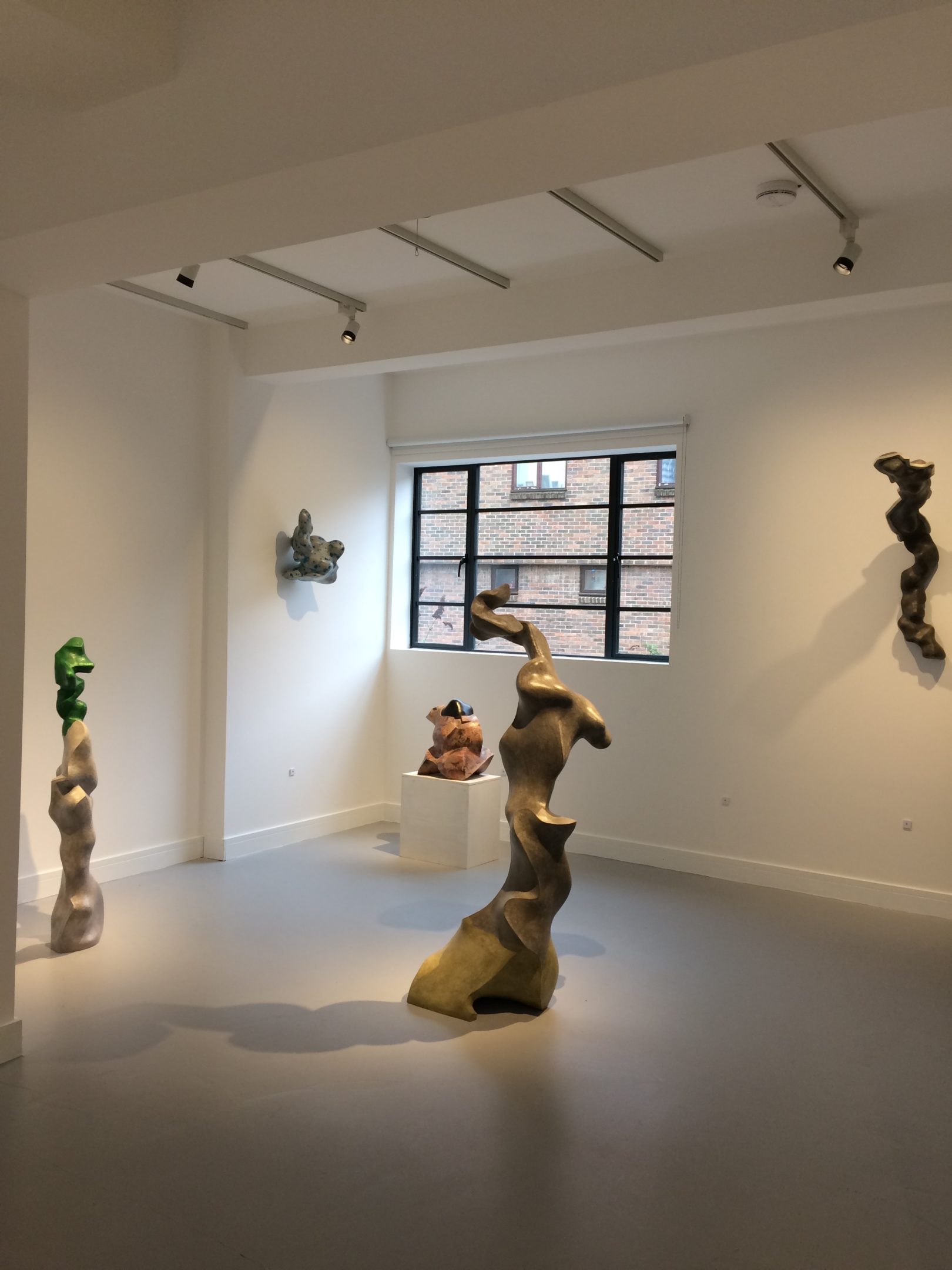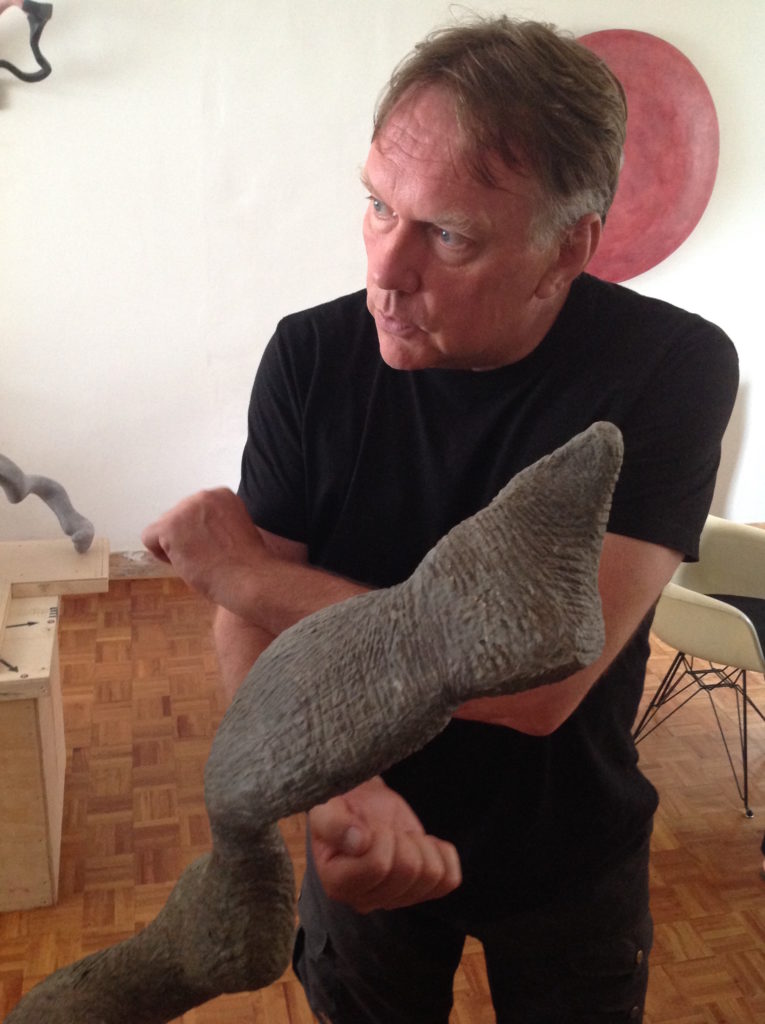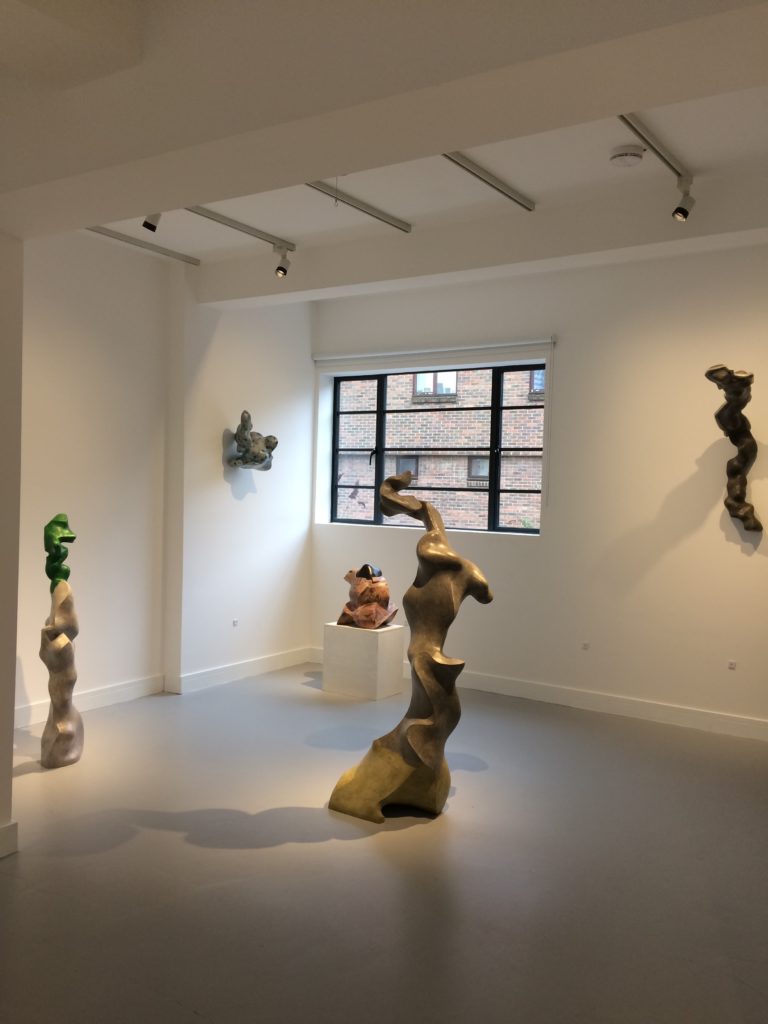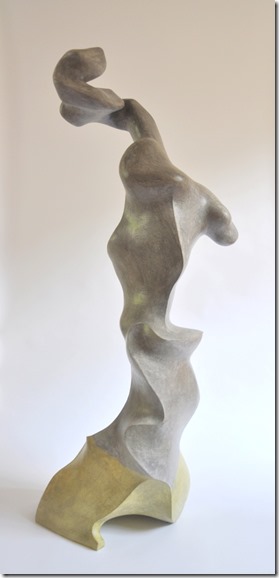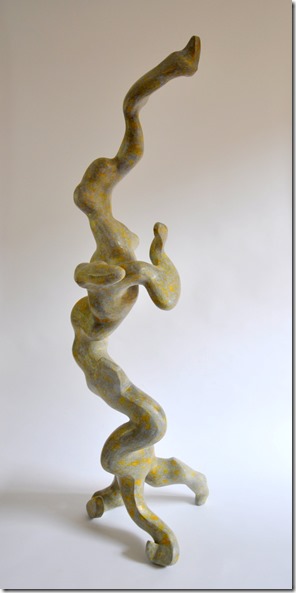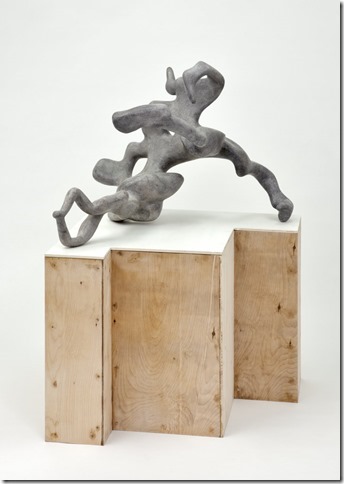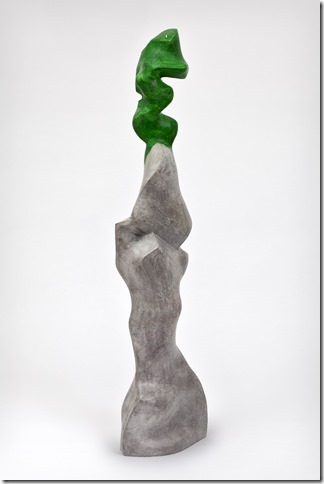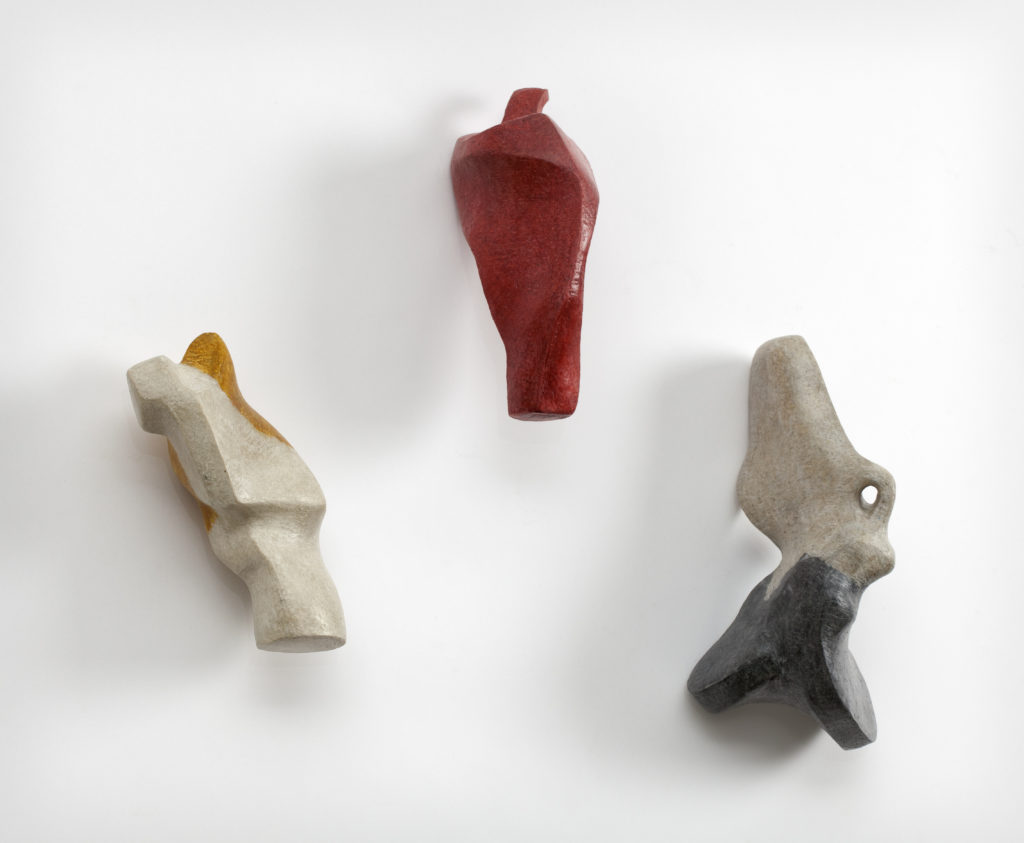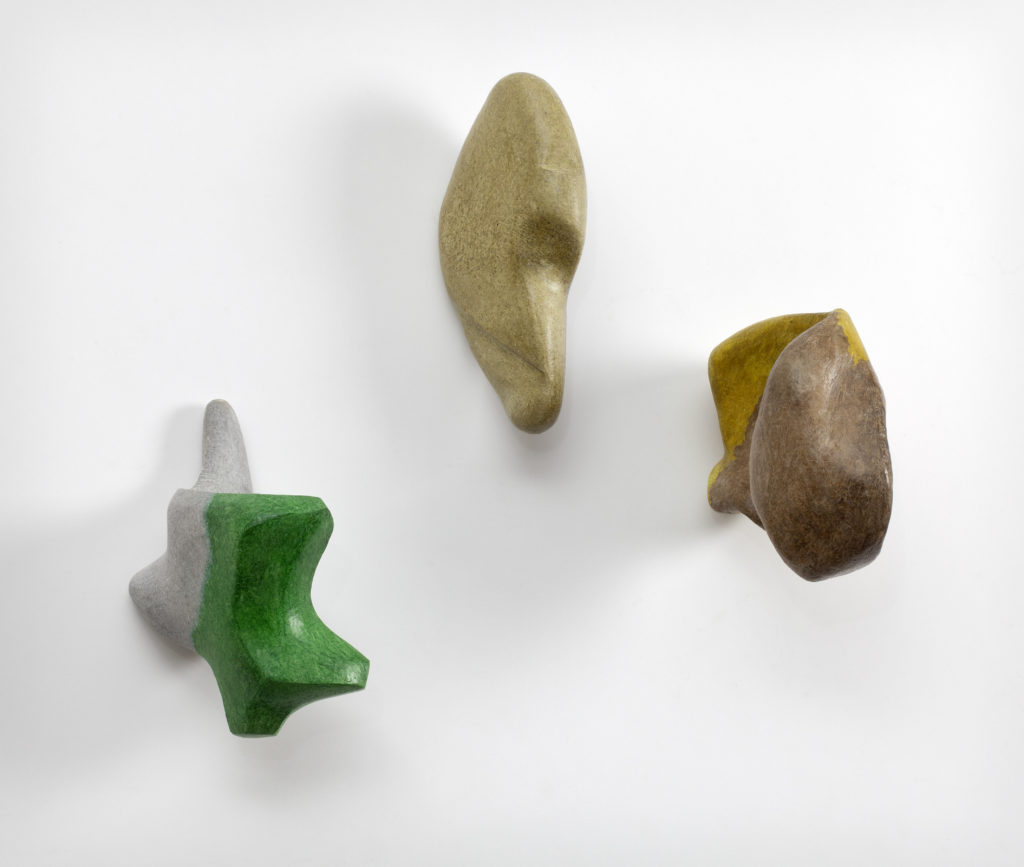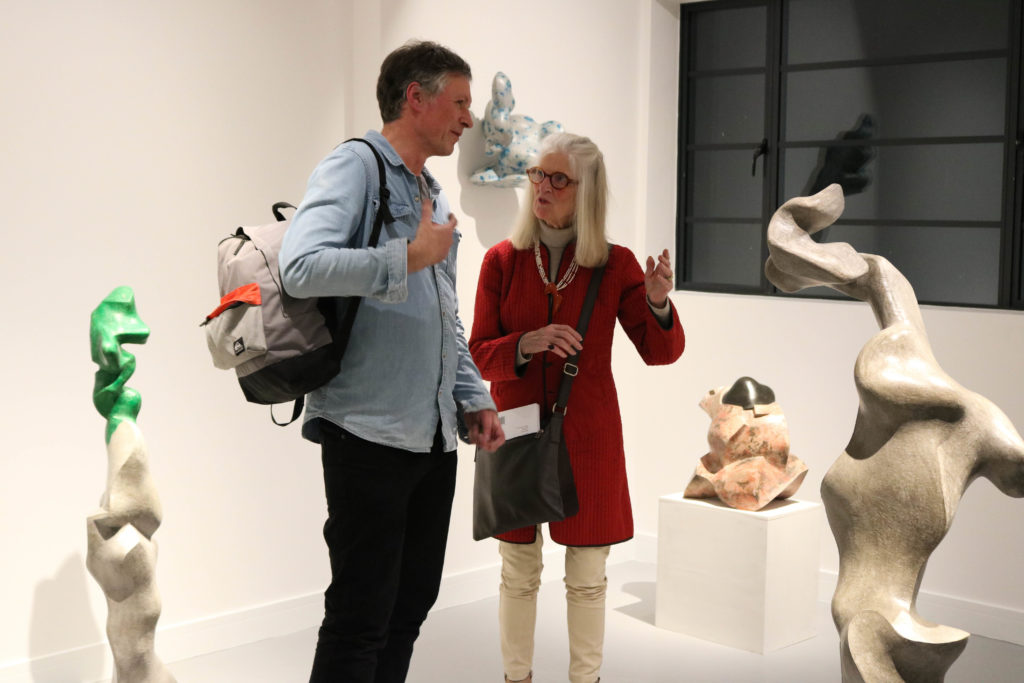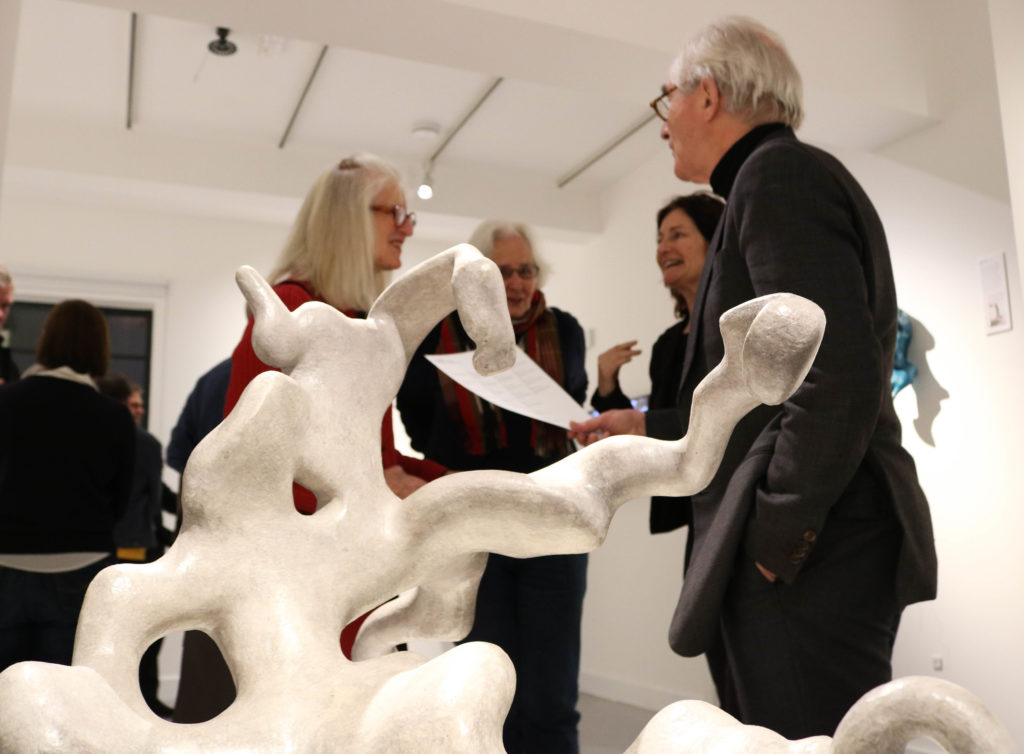10 March – 2 June 2018
Trash Art. Jan Eric Visser uniquely creates art from discarded newspaper and wax. He first began as a sculptor in 1987, since when, he has reflected on the value and potential beauty in trash. He is an artist deeply concerned about depletion of the earth’s resources. While waste is finally being recognised as a hugely topical and important subject, by no means all of it is effectively recycled or repurposed. So, Jan Eric’s work as an artist is both to be an advocate for a more resourceful society, and, through his artistic transformation of trash, to change its values.
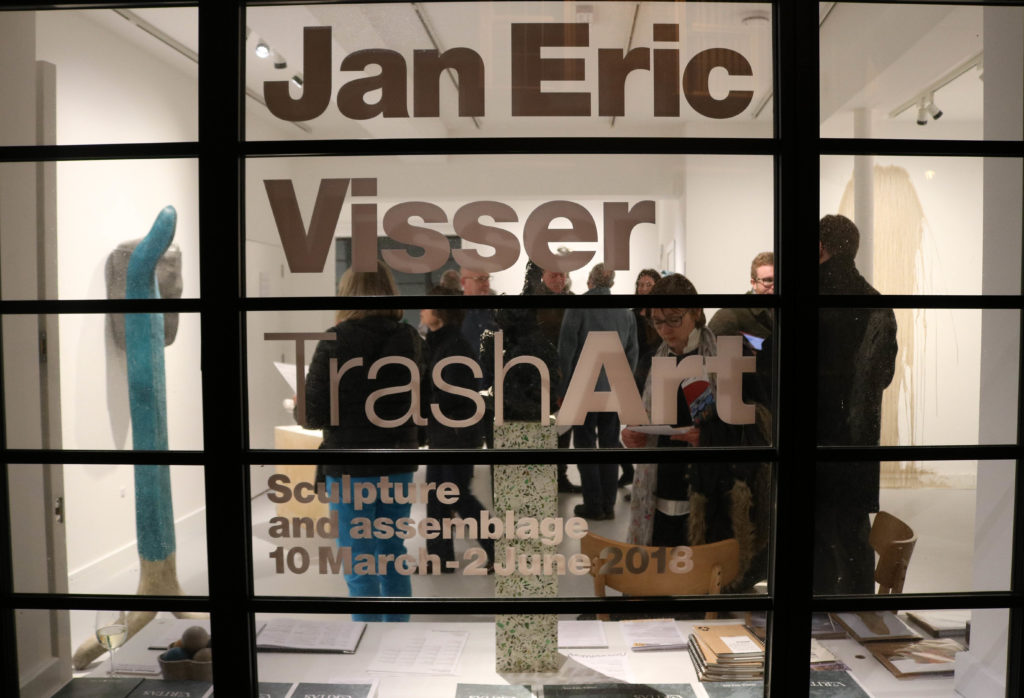
Speaking of the common practice for waste to be incinerated, the artist says:
‘To me it feels like we are burning our future as I look upon waste as our collective capital of the future. Fortunately, my waste is safe in the interior of my creations …..waiting for future generations to excavate the valuable resources…’
Jan Eric Visser
Based in Rotterdam, the majority of his work begins from his own household. All the paper and card, packaging and newsprint which comes in through the front door, once it has served its original purpose, becomes transformed in his studio into sculptural forms. In Jan Eric’s world, it becomes part of another form of existence for artistic purpose.
Form Follows Garbage
The artistic practice of Jan Eric Visser has been focused entirely on the transformation of his everyday garbage items into autonomous works of art. He likes to refer to this process as ‘Form Follows Garbage’, exploring the boundaries of his control over shape, material and color. At the same time, he is addressing pressing environmental issues like resource shortage and overconsumption by reducing his own carbon footprint.
“Interesting and thought-provoking”
comments by visitors to the exhibition in 2018
”Good to see use of rubbish so effective”
”I love the whole idea of using up trash”
”Really interesting process, and necessary, yielding some beautiful pieces”
Jan Eric’s forms emerge gradually. While he starts with specific items of garbage which determine the underlying shape and scale, these never literally guide his direction. He makes art instinctively without ever anticipating the end result. Layering pulped paper and card, he builds and shapes until he is satisfied. He then fixes and finishes with wax recovered from Catholic church candles.
Combining form and function with a strong ethical foundation
Jan Eric’s work is always untitled, as he does not want to fix any specific identity or association. Nevertheless, his art relates to a deep understanding of the ways in which a form can relate to the human scale. Not only that, but he considers its transition into the way it needs to occupy space. His sculptures often take the form of enigmatic figures. They appear to be both familiar and disturbing. Their identity hovers mysteriously somewhere between humanoid and abstract. Above all, his work completely combines form and function with a strong ethical foundation. Its material presence, its quality of surface and colour, scale and shape, is inextricably related to the ethics of its production.
Newspaper, reused printer paper, inorganic household waste, votive candle residue. 124 x 74 x 76 cm (incl crate/pedestal of retrieved wood). Photo: W. Vermaase Right: Jan Eric Visser, Untitled 2017, Newspaper, recycled newsletter, reused printer paper, inorganic household waste, votive candle residue. 132 x 38 x 18 cm. Aegon Art Collection, Photo: W. Vermaase
‘I must admit that I don’t look upon art as another commodity that is easily understood and consumed. Every day I am working towards a transformation of matter, and therefore of myself’
Jan Eric Visser
Waste transformed
On one of his trips to King’s Lynn, the artist collected trash along the River Great Ouse. He turned this collection into small works of art, which we showed on the wall as part of Trash Art: Jan Eric Visser.
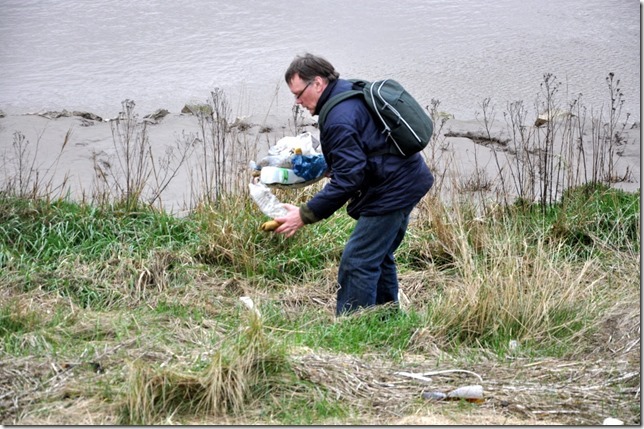
In another place or context, the materials the artist starts with, are just common household waste. But the materials he found by the banks of the Great Ouse river were just left there, discarded without care. However, in Jan Eric’s world, such materials become treasure. They take part in another form of existence for an artistic purpose. As art, Jan Eric Visser’s work is part of a new kind of environmental politics.
“Would really like to make a change. We only get one world, do not waste it!”
Said by a young visitor to the exhibition, 30/03/18<
In the industrial sphere, new artefacts created from former waste products can produce value. Making something out of what was apparently, nothing. While this challenges existing habits and norms, it helps us to make best and most economical use of limited resources. In the art-world, however, the same kind of action is more powerfully like alchemy. Thus, in such a way, Jan Eric’s art is transformative. He starts with what is obviously trash, so he has the effect of changing base material into something more precious.
Innovation in waste materials
‘I think both materials – Aquadyne and Recycled Glass Concrete – embody the new aesthetics of a post-industrial future in which valuable resources will be cherished and no longer incinerated as ‘waste’.’
Jan Eric Visser
Jan Eric Visser is constantly on the search for new and innovative waste materials. Below, is a new sculpture made with two of them. He made the base from a translucent concrete developed by the Technical University of Eindhoven to include waste glass and minerals to help purify the air and aid self-cleaning. The sculptural form, he formed from a material called Aquadyne, made from 100% post-consumer-waste plastics.
Aquadyne
Aquadyne is a new material which has macro and micro pores that enable the rooting of plants. It has uses for drainage, green roofs, green facades. Even vegetables may be grown on it! Mr. Gaskarth, an entrepreneur in the North East of England developed it. He invested a great deal of personal effort, time and money into this material. The new material was accredited by the University of Newcastle.
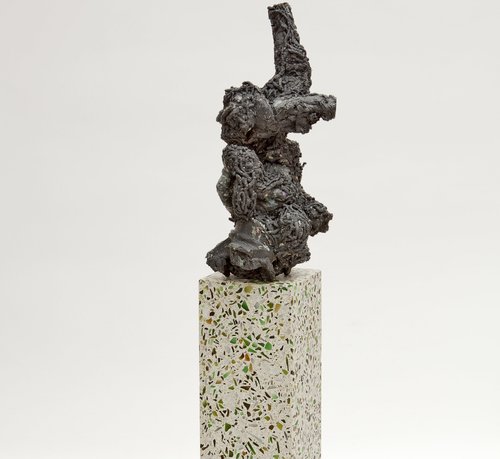
Translucent concrete and Aquadyne
102 x 20 x 19 cm
And the new concrete
The Technical University of Eindhoven developed the innovative concrete material. Concrete is the second most produced material in the world after drinking water. Unfortunately, it is highly unsustainable in terms of CO2 emissions and resource efficiency. Now, the University of Technology Eindhoven have developed a new type of concrete in which they replaced aggregates and Portland cement by waste materials, such as glass waste. Also they added a mineral to render the concrete self-cleaning and eliminate air pollution. Thus it uses UV light to prevent the growth of algae and degrade small particles in the air we breathe, known as nitrogen oxides. Its performance is increased by 40% as the various glass particles used in the concrete intensify the UV light.
Following Trash Art, Jan Eric Visser is one of our featured artists. You can read more here.

